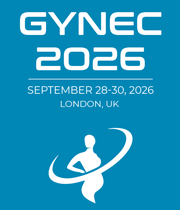Reproductive Technologies
Reproductive technologies are a group of medical techniques used to assist in conception and pregnancy. These techniques include in vitro fertilization (IVF), intrauterine insemination (IUI), egg and sperm donation, as well as gestational Male Reproductive System. These technologies are used to help people with fertility issues, single people, and same-sex couples become parents. In vitro fertilization (IVF) is the process of combining an egg and sperm in a laboratory dish and then transferring the resulting embryo into a woman’s uterus. This is the most common type of assisted reproductive technology. During the IVF process, the woman’s eggs are surgically extracted and mixed with sperm in a laboratory. The resulting embryos are then transferred back into the woman’s uterus. Intrauterine insemination (IUI) involves placing sperm directly into the woman’s uterus. This is often used in cases where there is a low sperm count or poor quality of sperm. The sperm is placed into the uterus using a thin catheter. This procedure is often used in combination with fertility drugs to increase the chances of conception.

Neda Zarrin-Khameh
Baylor College of Medicine, United States
Marlen Sulamanidze
Total Charm Clinic, Georgia
Mohamed M Hosni
London North West University Healthcare NHS Trust, United Kingdom
Neda Zarrin-Khameh
Baylor College of Medicine, United States
Marlen Sulamanidze
Total Charm Clinic, Georgia
Mohamed M Hosni
London North West University Healthcare NHS Trust, United Kingdom




Title : Evaluate the changes in SP-D levels in plasma during different phases of the menstrual cycle recruited from the Well- Adult Surfactant Protein Study (WASP)
Natnicha Kitti udom, University College London, Thailand
Title : Synergistic antifibrotic potential of protocatechuic acid and D-Carvone in liver protection
Ling Yin, Hefei Comprehensive National Science Center, China
Title : Pathologic findings in women with atypical glandular cells on Pap test
Neda Zarrin-Khameh, Baylor College of Medicine, United States
Title : Non-ablative radiofrequency for pelvic floor dysfunction and female intimate anti-aging: a 6-month prospective multi-centre cohort objectiv
Shaadaiti Wufuer, First Affiliated Hospital of Xinjiang Medical University, China
Title : Benign gynecological conditions and lifetime contraceptive patterns: a population-based analysis of the 2022–2023 national survey of family growth
Mayi Gnofam, Stony Brook University, United States
Title : Hysteroscopic endometrial resection with resectoscope versus Novasure ablation: A look at patient satisfaction with treatment of abnormal uterine bleeding and rates of progression to hysterectomy
Genevieve Kan, West Gippsland Healthcare Group, Australia